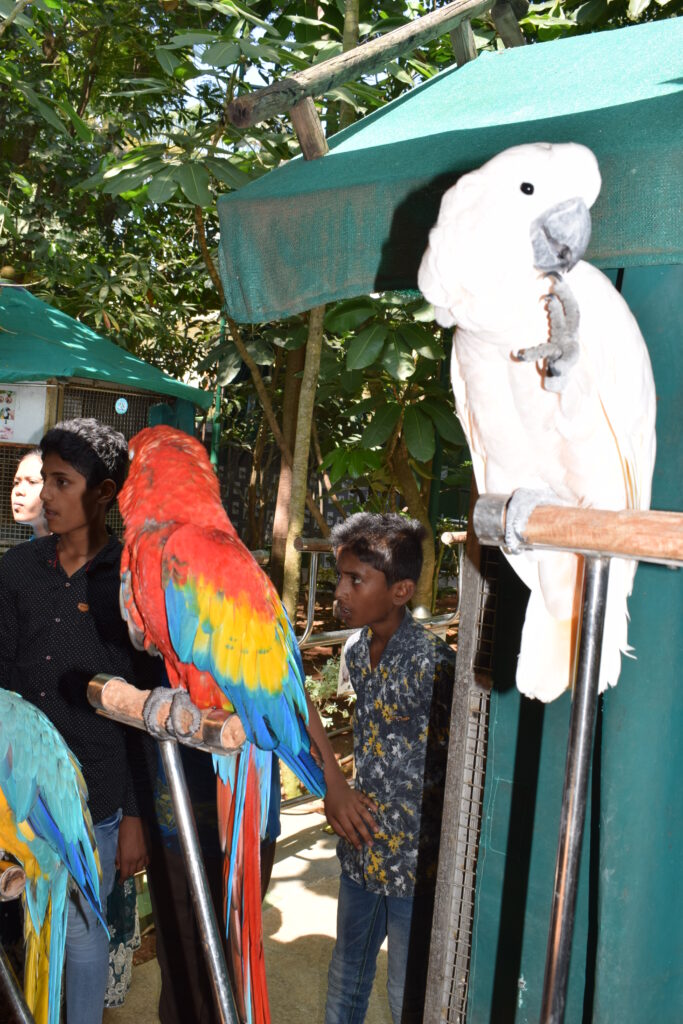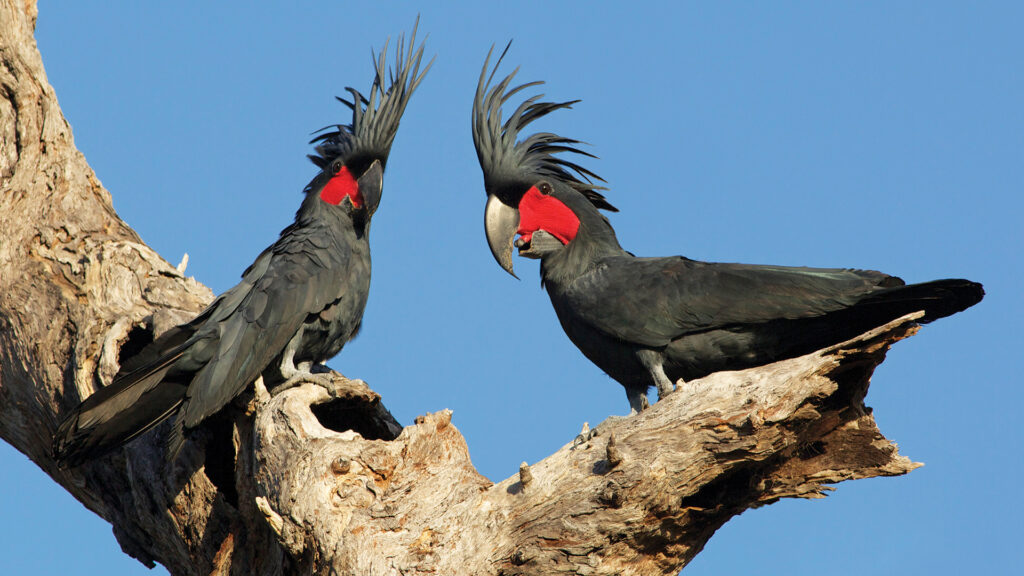Karnataka’s cultural capital, Mysuru (previously Mysore) could boast of the largest concentration of twitterati within the country. No, not in the virtual space, but in the real sense of the word! The city’s Sri Ganapathy Sachidananda Ashrama hosts the largest number of parrots, in a bewildering range of colours and hundreds of them as large as half of the height of a normal person. During the last few years, the Ashrama has emerged as a new tourist attraction in the city already known for its famed gardens, palaces and sanctuaries.

‘Shukhavana’ in Mysuru hosts a twitterati of around 2,200 birds, all members of the parrot family. The cacophony is at its shrill best at dawn and could be heard from afar when the macaws, parakeets, lorikeets and cockatoos, representing a riot of colours, announce the break of the day with their coos, caws, and croaks. The flapping and fluttering by the feathered friends fills the day.
Sprawling over 35 acres, the Ashrama has been hosting around 469 species of these colourful birds. The aviary allows free flight for these exotic birds within an enclosure under a mesh spanned 60 feet above the ground enclosing several trees, large cages and walking tracks for visitors. Three years ago, the aviary entered the Guinness Book of World Records for hosting such a large number and variety of birds.

Parrots are considered to be one of the most intelligent birds who empathise with human beings and can even mimic the voices and sounds they hear. They are mostly found in temperate regions of the world around tropics. India has only very few species of them. The larger and the more colourful ones are found in Latin America and Australasian region.

The aviary was conceived a few years ago when someone brought a pair of injured macaws to Swamiji, a nature enthusiast, who found them to be of exotic variety. After they were nursed back to health, the Swamiji dedicated some space within his large ashram to take care of the injured or crippled birds. It was named ‘Shukavana’, a retreat for those looking for relief and recovery. Soon devotees of the Ashram from around the world began to gift exotic birds. The numbers grew to hundreds and within no time the aviary was overflowing with over two thousand of them.
Parrots generally have a lifespan ranging from 25 to 50 years. However, the Major Mitchell Cockatoo could survive longer. The oldest that died is known to have lived 83 years. Hailing from Australia, they have a salmon-pink plumage. The aviary has a pair of them. It also has a pair of the Military Macaws that grow up to 70 cm (beak to tip of the tail) and could have a wingspan of 100 to 110 cm. The Scarlet Macaw is however the cynosure of all eyes at the Ashram. Sporting bright red, blue and yellow colours, it could measure up to 90 cm, major portion of it being the tail. Besides those in the cages, a couple of them sit in the central pavilion for photo opportunity for bird lovers and visitors. Scarlet Macaws are generally seen riding the tiny bicycles in concourse of Indian circuses.

Bird-keepers point out that the Congo African Grey parrots are the most intelligent among the avian guests. With a walnut-sized brain, they are said to mimic the human voices or other sounds instantaneously. Gifted with a long and stout beak, Channel-billed Toucans could measure up to 48 cm, a fourth of it being the beak itself. One of these birds in the aviary was under vet care in the well-equipped rehabilitation centre. Blue-winged Macaws which are known to live up to 50 years are black-billed but have a red or yellow-feathered underside. They are on the IUCN list of endangered species. Rose-breasted Galah Cockatoos, gifted by an Australian visitor at the Ashram, are extremely friendly birds. The bird-keeper informs, they can live up to 70 years in the captivity with provision of good diet.
Sheathed in striking colours, Shamrock Macaws are a pleasant mélange of colours inheriting their genes from their parents i.e., Scarlet Macaws and Military Macaws. These are favourites for pet bird-keepers.
A few Palm Cokatoos too regale the visitors with their fan palm plumage and strong beak which can break thick sticks from live trees and splice them into thin strands to line its nest. It can even split palm fruits and said to be the largest bird of the Australian continent and can weigh up to 1,200 grams.

The list could be endless. The Rehabilitation Centre on an average day has 30 to 40 of these birds under the vet care. According to Dr. Dasari Srilakshmi, the physician at the unit, new birds are quarantined upon arrival for a few weeks of training for the new ambience. The unit has a few blind birds which are permanent inmates under protective custody. Some birds get into the habit of plucking their feathers and flesh from the breast. They are fitted with a plastic disk around the neck which prevents the beak from reaching the body feathers. The unit is equipped with X-ray, diagnostic and DNA lab with entire range of facilities that an ideal vet-care unit would require. An isolation room for birds with infectious ailments too has been provided.
The Ashram authorities offer the avian guests a sumptuous treat with a lot of nuts, fruits, berries and sweet corn. Birds are released from their cages for designated period for some free flying and exercise during the day. Curiously, most of them return to their cages by themselves. The ones found to have lost their way, are led back to their perches by the staff.
The fact that one gets to see the bewildering diversity among just one species of birds, i.e., parakeets at ‘Shukavana’, triggers the spirit of exploring Nature among young visitors. No wonder, why the aviary has emerged as an education centre for the students and nature enthusiasts.
M A Siraj is senior journalist based in Bengaluru. He writes for several publications in the country.

